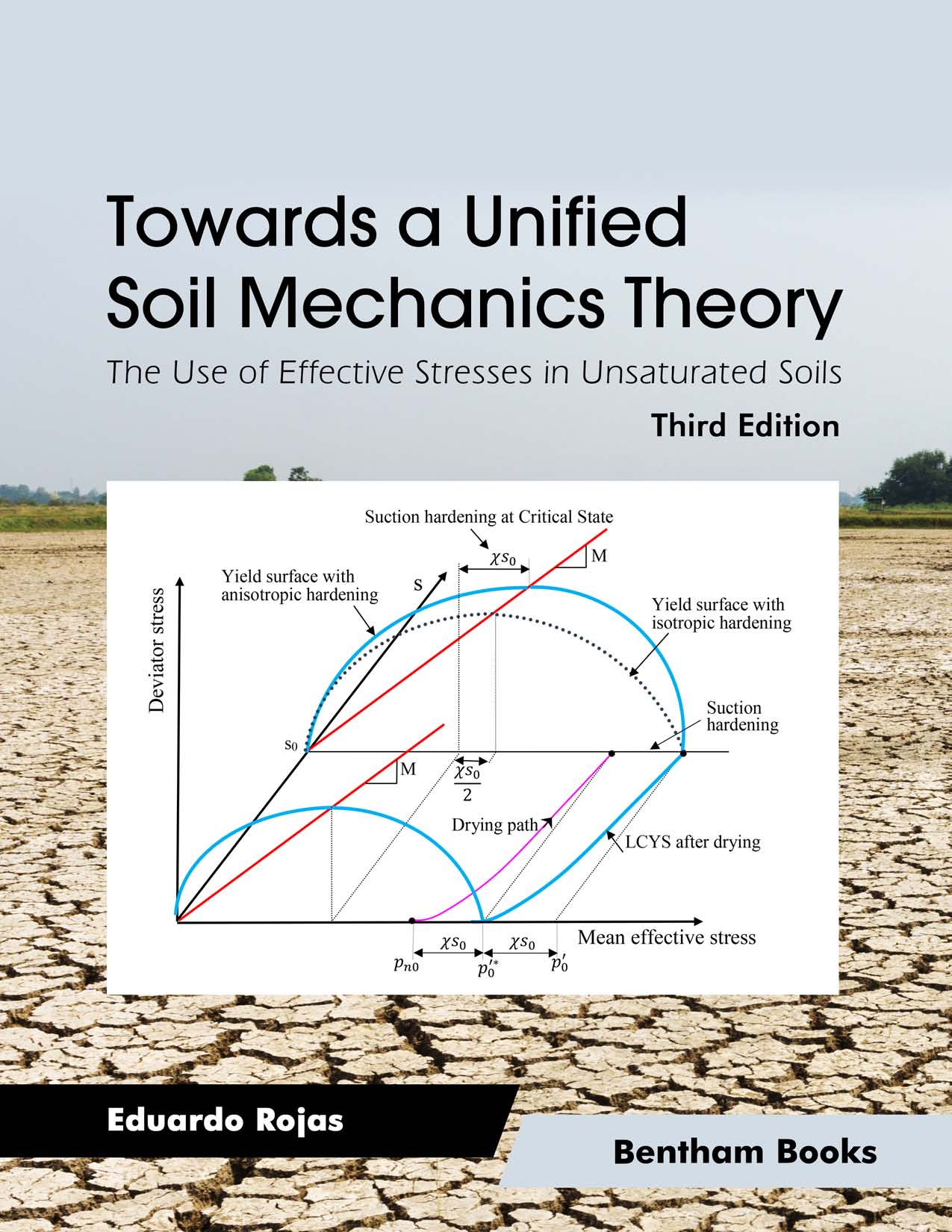Preface
With the introduction of the effective stress concept, the behavior of saturated soils could be clearly understood, and the basic principles of saturated soil mechanics could be established. The effective stress principle states that the strength and volumetric behavior of saturated materials are exclusively controlled by effective stresses. Constitutive models for saturated materials of different types are all based on the effective stress principle. Later, based on the principles of thermomechanics, the Critical State theory combined the strength and volumetric behavior of saturated soils in a simple and powerful constitutive model. A great number of models for saturated soils are based on the Critical State theory.
Things did not go so smoothly for unsaturated materials. More than fifty years ago, Alan W. Bishop proposed an equation for the effective stresses of unsaturated soils. However, this equation was widely criticized because it could not explain by itself the phenomenon of collapse upon wetting of soils. In addition, Bishop’s effective stress parameter χ showed to be extremely elusive and difficult to determine experimentally. Given these difficulties, the use of the so-called independent stress variables (mainly net stress and suction) became common in unsaturated soil mechanics. Different equations for the strength and volumetric behavior of soils were proposed based on these variables. Then, the theory for unsaturated soils became distant from that of saturated materials. The Barcelona Basic Model represents one of the simplest and most accomplished models within this trend. The Barcelona Basic Model enhanced the Critical State theory to include unsaturated materials and give a plausible explanation to the phenomenon of collapse upon wetting. This model proved that this phenomenon could only be modeled if, in addition to a volumetric equation, a proper elastoplastic framework was included. However, the simulation of some particular phenomena related to the strength and volumetric behavior of unsaturated soils, appeals for the inclusion of the hysteresis of the soil-water retention curve and the hydro-mechanical coupling observed in unsaturated materials. The difficulties met in introducing these aspects into the independent stress variables models made it clear that a different approach should be considered. Then, gradually elastoplastic models based on Bishop’s effective stress equation started to appear, showing their superiority by including the hysteresis of the soil-water retention curve and the hydromechanical coupling of unsaturated soils. And finally, the debate about the appropriateness of Bishop’s equation to represent the effective stresses for unsaturated soils is slowly coming to an end. This transformation in the construction of constitutive models for unsaturated soils is also leading towards a unified soil mechanics theory.
This book shows how the effective stress principle can be applied to simulate the strength and volumetric behavior of unsaturated soils employing the same equations commonly used for saturated materials. The book initiates with an analysis of the stresses transmitted to the different phases of an unsaturated soil when it is loaded. Contrary to other analyses, and based on the simulation of wetting-drying processes in porous media, it is considered here that unsaturated soils may exhibit three different fractions: an unsaturated fraction represented by medium size pores, a saturated fraction represented by micropores, and eventually, a dry fraction represented by very large pores. Each one of these fractions is linked to a different effective stress equation. The analysis results in an expression for the stresses carried by the solid skeleton of the material. This expression can be written in the same terms as Bishop´s effective stress equation and leads to an analytical expression for Bishop’s effective stress parameter χ. However, the variables required to obtain this parameter χ cannot be experimentally determined. For that purpose, a network solid-porous model is developed. This network model can approximately reproduce the structure of soils based on the grain and pore size distributions of the material and is capable of determining the allocation of water into the pores of the soil and thus simulating the soil-water retention curves of the material, including the scanning curves. It is also possible to obtain the required parameters to determine the value of Bishop’s parameter χ and therefore compute the current effective stress. Nevertheless, the use of a network solid-porous model requires a large memory storage capacity that cannot be presently found in common computers. Furthermore, the time required to run a network model with only one million elements becomes excessive and is not a practical option. For that reason, a probabilistic solid-porous model that reduces the storage requirements and speeds of the simulations has been developed. Additionally, a unified elastoplastic framework to account for the volumetric behavior of unsaturated soils, including expansive, collapsible and compacted materials, has been developed. This framework explains some phenomena that could not be explained using the independent stress variables approach. All these developments lead to a general framework for the strength and volumetric behavior of soils based on the Critical State theory and the bounding surface concept resulting in a simple, fully coupled model that accounts for the behavior of both saturated and unsaturated materials, including compacted and expansive soils. Each one of these developments has been confronted with experimental results showing the appropriateness of this approach. In that sense, a unified soil mechanics theory is presently on its way.
CONSENT FOR PUBLICATION
Not applicable.
CONFLICT OF INTEREST
The author declares no conflict of interest, financial or otherwise.
ACKNOWLEDGEMENT
Declared none.
Eduardo Rojas
Universidad Autónoma de Querétaro
México

